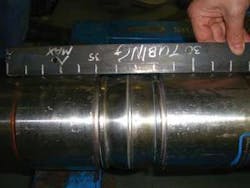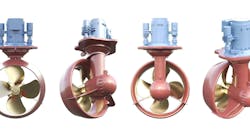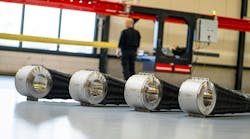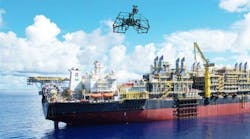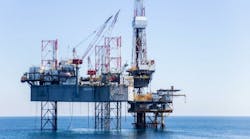Gordon Mackenzie - Baker Oil Tools
The Z-Seal technology is a high expansion sealing methodology replacing more traditional elastomeric sealing elements. The use of an expandable metal seal combined with a non-metallic back-up rather than an elastomer creates a high-integrity wellbore pressure seal helping to mitigate or completely eliminate many common wellbore problems encountered with the use of more commonplace elastomeric sealing methodologies. Some examples of these are the elimination of concerns re-gasification/explosive decompression, high temperature seal degradation, greater resistance to chemical attack, longevity under dynamic conditions, and lack of memory requirement for full below-gauge seal retraction.
Identifying the need
Globally, E&P companies have long sought a reliable intervention solution that could eliminate an elastomeric seal, and achieve non-monobore high-expansion deployments. The design and introduction of this technology has questioned and answered many paradigms around eliminating elastomeric failures associated with wellbore intervention sealing devices. The technology is adaptable to a broad range of wellbore conveyance methods, including threaded tubulars, coiled tubing, electric wireline, and wireline. Coiled-tubing and wireline conveyance enable metal-to-metal sealing solutions in environments where live well operations help mitigate health, safety, and environmental (HS&E) concerns, reduce non-productive time (NPT), minimize formation damage due to kill-weight fluids, and subsequently improve well economics.
A major global operator identified this technology as a potential solution to their wellbore intervention challenges in a Middle Eastern offshore gas field development. The operator’s high-rate gas completions consisted of 7-in. (18-cm) monobore and 9.625-in. (24.4-cm) x 7.625-in. (19.4-cm) big bore completions with cased and perforated 7-in. liner at typical deviations of 55°. These carbonate reservoirs were initially over-pressured with significant vertical extent and having the potential for crossflow between the zones of interest. The requirement for the wells was to perform matrix rate multi-stage acid stimulations. To optimize the stimulation of the upper zones, modeling and previous field experience had shown the operator that to reduce both acid and diverter volumes, that temporary isolation of the lower zones would provide for the best solution to optimize the potential of the zone. Initial isolation of these lower zones was conducted using a traditional elastomeric sealing retrievable bridge plug. Some issues on these initial efforts relating particularly to retrieval issues based on the elastomeric element not ‘relaxing’ and on plug loss due to downward crossflow on retrieval, prompted the operator to select the Z-Seal as a platform to develop a suitable plug to meet the requirements of the operation.
Sizing and testing
A plug of the size required by the operator was not yet available and specifications to meet the parameters were drafted. These included having a maximum run in and retrieval plug outer diameter (OD) of 5.20 in. (13 cm) for operation within the liner inner diameter (ID) of 6.184 in. (15.7 cm), effectively achieving a metal seal expansion ratio of some 119%, significantly greater than traditional elastomeric sealing elements. Pressure and temperature requirements were not enormous at 7500 psi and 230° F (110° C), respectively. Material selection for the plug and seal had to be commensurate with the particular wellbore environment including the stimulation acid and H2S, such that nickel alloys were selected in order to provide for enhanced chemical resistance. Another requirement of the seal was to conform to the stringent requirements of International Organization for Standardization (ISO) 14310 V0 qualification.
Operational deployment
Once development and lab testing including passing the V0 qualification were finished operational deployment was undertaken. After six installations, where only one run could be classified as 100% successful a moratorium was placed on the plug use pending detailed engineering and operational investigation and subsequent re-development work based on lessons learned and actual operational experience. A number of areas for improvement were identified and a project team put in place. This project team was multi-disciplined and housed over three continents. A number of the issues were minor in nature and were relatively minimal in terms of time requirements and complexity to resolve. The more complex issues related to what became apparent as those created from the significant shock seen during both the setting and releasing phases of plugging operation.
Operational issues
Some of the operational issues included, premature shear sub actuation; sucker rod thread failure; non-planned plug release from running tool; seal retraction to 5.50-in. (<5.20-in. expected); anchor-slip mandrel damage and body lock ring mandrel damage. Therefore, the primary re-design objectives were set as the elimination, reduction or compensation of the setting and pulling system impact loads. This would help prevent damage to system components therefore aiding in providing for reliable plug retrieval and improving redress time concerns and the economics thereof remembering these are nickel alloy components. This objective would also eliminate inadvertent premature actuation of the plugs emergency releasing functionality. Other objectives were to achieve consistent metal seal retraction below that of run in OD (5.20-in.), ensure greater than 50% metal seal retraction prior to release of the slips from the liner ID, therefore enhancing bypass during recovery for potentially cross-flowing zones and limiting the slip release travel in order to protect the slip mandrels from suffering damage. At the same time, all re-design efforts had to leave the potential within the system to allow for multiple ‘time-of-operation’ back up releases capabilities.
A design process was put in place with the following steps:
- Review history/findings (multi-company input)
- Establish and agree on re-design requirements (multi-company input)
- Re-design (a peer review design process was established)
- Component prototype testing (in actual well conditions where applicable/practicable)
- System qualification testing (simulate actual field conditions/operations)
- Review and risk assessment (multi-company participation).
Main engineering challenge
The system shock issue was the main engineering challenge. The use of a metal sealing system requires significantly higher setting and pulling forces to be used in order to create or release the seal. In this operation a multi-stage piston type hydrostatic setting tool is used in order to create these forces. The system is governed by a calibrated shear ring with forces exceeding 160,000 lbs. It is also of interest to note that all prior system testing (apart from the V0 qualification) was performed in fluid. In actuality the deployment of the tools was in a gas environment. The use of the hydrostatic well pressure as the medium to create the pressure within the hydrostatic setting tool was significantly more aggressive in the wells gas environment than that of fluid testing leading to this much greater system shock finding.
In order to solve this problem, a number of solutions were presented, with the idea of a fluid (oil) damper system being selected for the hydrostatic setting and pulling tool. A dual damper philosophy was followed to allow for system redundancy. Multiple component tests were conducted in order to optimize the system. Component testing results indicated that the dampers had provided for a 93% kinetic energy absorption (14x improvement) in a gas environment.
Damper philosophy
The damper philosophy proved so successful, that for the retrieving side on the bottomhole assemblies (BHAs), a damper was also designed into the actual plug pulling adapter, working in conjunction with the dampers in the hydrostatic pulling tool to further minimize failure potential.
System qualification testing required that functionality and operability should be demonstrated in as near to well conditions as possible. This was to include complete system testing with wireline jar activation of retrieval and emergency release features under both temperature and pressure (nitrogen gas) conditions. Another criterion set by the re-development project team was that of system repeatability. In the original operations, there had been a successful run, in testing it was identified that it needed more than one (three actually planned) full system tests to demonstrate effective repeatability of the solutions.
The requirements for the testing were that it satisfy all HS&E requirements, have nitrogen gas capability to greater than 7500 psi, temperature capability of greater than 225° F (107° C), operate on a slickline/braided line unit, ability to conduct operations 24/7, deploy a tool string of minimum length 43 ft (13 m) and deploy and actuate a tool string of 1,700 lbs.
The solution provided used the Baker Oil Tools test lab facility in Aberdeen. Here we had nitrogen gas capability to 15,000 psi, temperature to 500° F (260° C) and tool string deployment up to 53 ft (16 m). There were some limitations such as height, which led to the use of 0.125-in. (0.3 cm) slickline rather than braided line and also some limitation on jarring capability early on in the testing.
Testing and lessons learned
The results of the full system testing conducted over several months were that all ‘as near to actual’ testing operations were conducted with zero incidents. Re-design and repeat testing was required to prove-up/qualify some components. The hydraulic damper philosophy was proven to mitigate issues in the simulated environment, nickel alloy mandrel damage eliminated; non-destructive (critical) component testing indicated no evidence of cracking or damage; no premature release of plug from retrieving tool. Also the metal sealing objectives were realized such that there was 100% compliance with the under-gauge retrieval OD requirement; >50% seal retraction prior to slip disengagement, and slip mandrel damage was eliminated.
The team was able to take away a number of conclusions and lessons learned from this re-development project. In the case of complex tool systems, full system testing in ‘as close to actual’ well conditions should be undertaken whenever practicable. It was also evident that the testing of the system in fluid as opposed to the gas environment in which it would actually be deployed was not necessarily an accurate representation. It was learned that repeat testing was invaluable to establishing system reliability. Although three complete system tests were planned, due to issues encountered when component testing was elevated to system testing, these three planned full tests increased to six.
The other lesson from this was that successful individual component testing does not necessarily translate to demonstrating full system compatibility or functionality.
After the testing was completed, a multi-discipline, multi-company review and risk assessment was conducted over a three-day period. This review and risk assessment was beneficial in showing the degree of progress that the project had achieved.
It was also proven that the engineering and operational peer review process that was initiated at the beginning of the project was successful. Although it appeared to add to the engineering timeline, in reality it saved time in that manufacturing could not be started without this peer review preventing, in some cases, the manufacture of components that would not have been the best solution.


